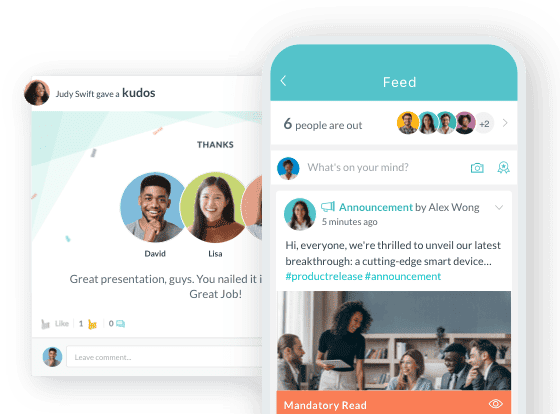HR Management Software Tips To Run An Effective Company
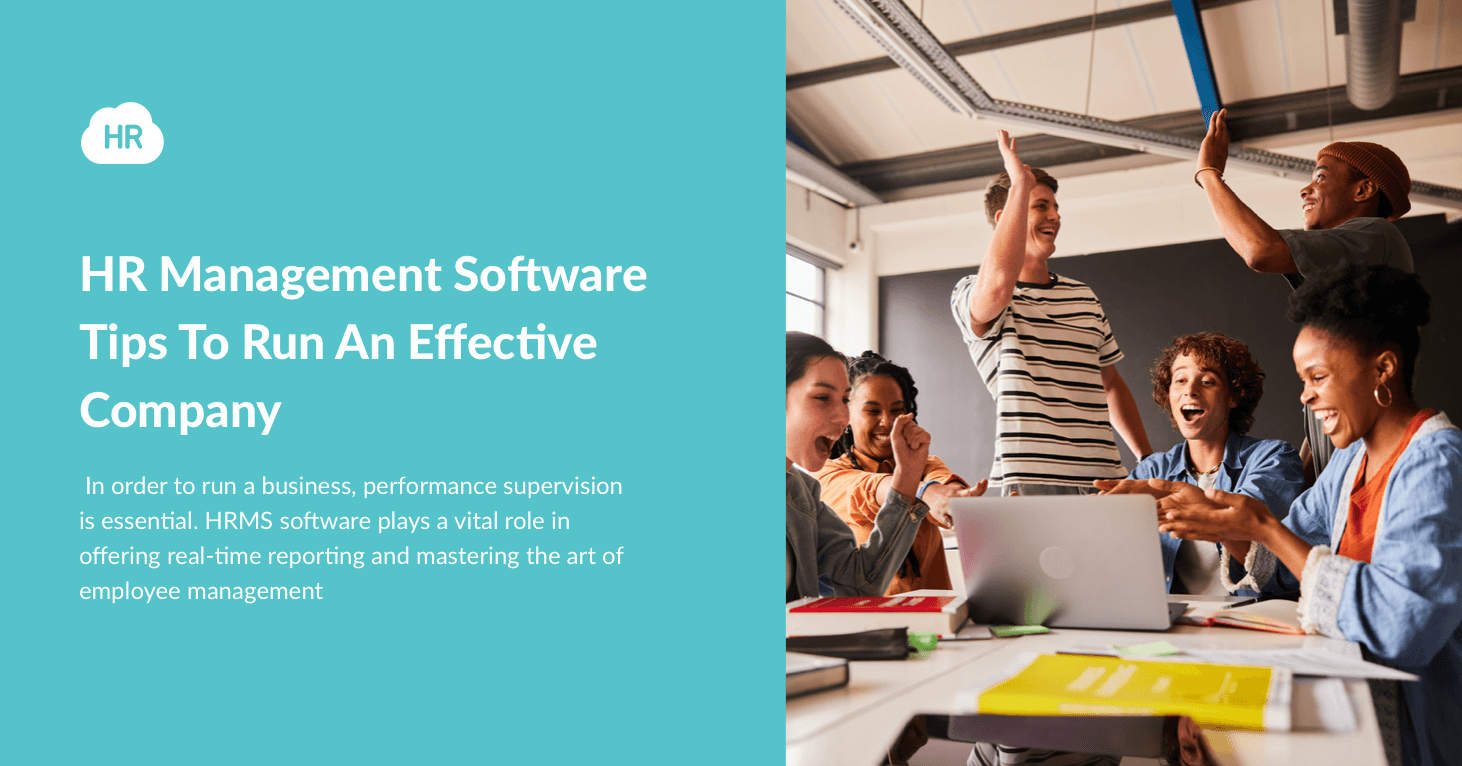
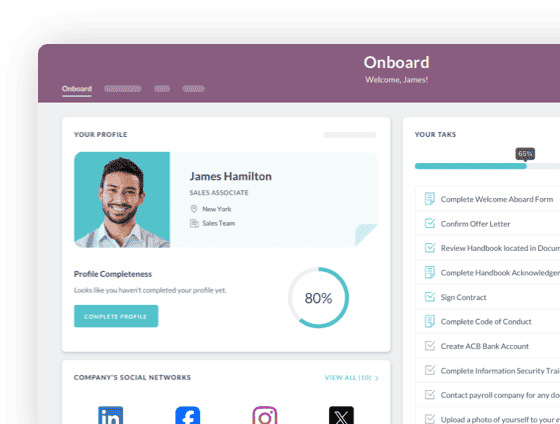
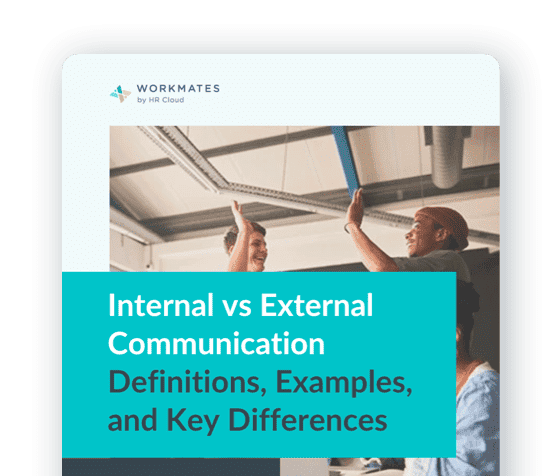
 Cut onboarding time
by 60%—here's the
Ultimate Checklist
that helped do it.
Cut onboarding time
by 60%—here's the
Ultimate Checklist
that helped do it.
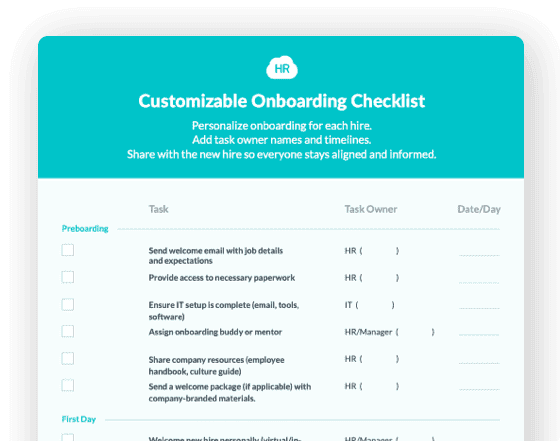
Remember the first time computers started managing data in the 1970s? Since then, HR systems have come a long way.
R management systems, now often referred to as onboarding software, are programmed solutions for managing or streamlining HR-related processes. In today's modern age, optimizing one's time is crucial, especially when it comes to the employee onboarding process and lifecycle management.
Top HR platforms and onboarding solutions help you allocate tasks, automate workflows, and save time. As per Statista, the HR tech market size will reach $90 billion by 2025 from $47.4 billion. This growth reflects the increasing importance of efficient employee onboarding software and comprehensive HR solutions.
So, here are a few benefits of onboarding software that can save time and money for businesses:
-
Smooth onboarding process
-
Automation of boring and repetitive tasks
-
Allowing employers to handle their data through employee self-service portals
-
Maintaining an accurate database on deadlines
-
Providing real-time data into HR metrics
Take a look at HR software solutions from onboarding to employee engagement, covering the entire employee lifecycle.
Importance of Effective HR Management Software for Running a Successful Company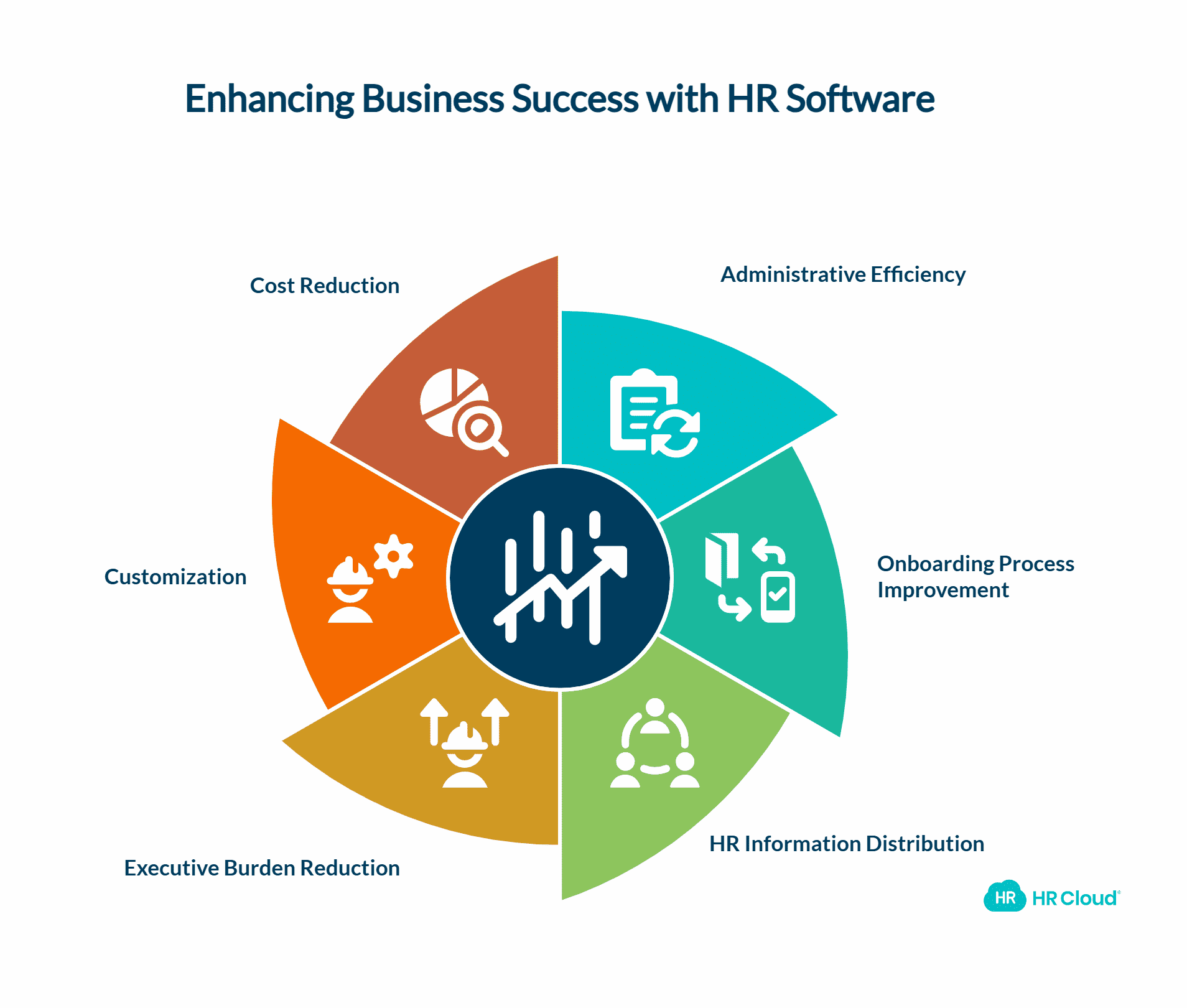
From administrative efficiency to simplifying the onboarding process, onboarding software improves processing. These onboarding platforms are designed to collect as well as distribute HR information across the entire organization, facilitating better employee onboarding and management.
It further helps to decrease the extreme burden on the executive section of a business. You can customize your onboarding software solution as per your business needs and cut down on costs for less important things.
Understand the Needs of Your Company
When a business grows, you enjoy a fair share of revenue growth. But on the other hand, it gets complex to deal with workflow optimization. Before we go further into the details of buying the best HRIS (Human Resource Information System), here are a few things you should contemplate:
Identify the Specific HR Tasks That Need to Be Automated
Even big companies like McKinsey, with over 15 billion in revenue, have started using new onboarding platforms.
They have started elevating administrative tasks through automated onboarding software, gathering and analyzing employee data.
"We have to start thinking of solutions, data, and employee experience when talking about digitalization in HR," said the CHRO of a European chemical company.
Different onboarding solutions function differently for businesses. This is the reason you need to understand what your business needs. Whether it's updating employee information once or sending reminders to the employee, or securing sensitive documents.
Determine the Features and Functionalities Required to Meet Those Needs
To manage things better, you need better features in onboarding software.
HR management tools like smooth onboarding, and maintaining good employee records features like analytics, reporting, and security are useful.
As per Clickboarding stats, 69% of employees are likely to stay with a company for 3 years if they experience great onboarding.
In short, better features, a better employee satisfaction rate, and improved employee retention.
Consider the Size and Scope of Your Company When Selecting a Software Solution
Whether you have 10 employees or a 100-employee company, the basics are the same. You need to handle, onboard, and manage people databases accurately. That being said, as your businesses grow, you need to understand when to incorporate new onboarding software. Whether you have 10 employees or a 100-employee company, the basics are the same. You need to handle, onboard, and manage people databases accurately. That being said, as your businesses grow, you need to understand when to incorporate new onboarding software.
While looking for the best HR tools for a smooth onboarding process, consider the size and range of your company.
According to an HBR survey, promoting the right person is the most satisfactory way to grow your business and enhance talent management.
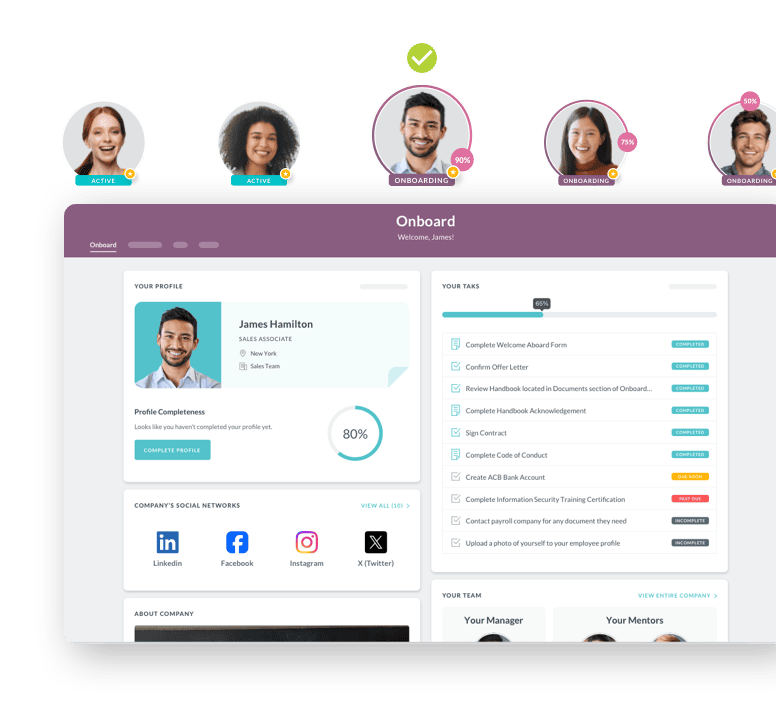
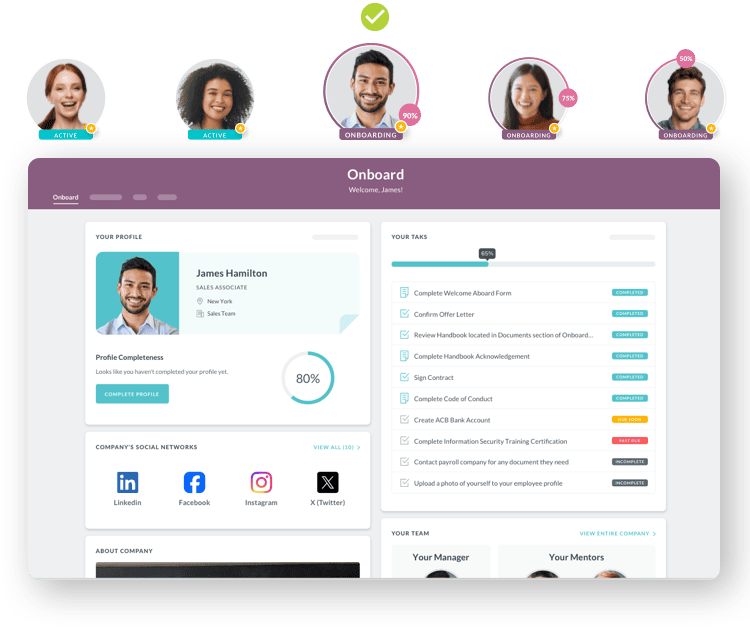
Choose the Right Software
Did you know 64% of employees believe that celebrating employees' accomplishments creates job satisfaction? Learn a few onboarding management tips and never miss any chance to celebrate with your employees using your onboarding platform.
Back to the basics: Here are a few things to look for in top onboarding software:
Research and Evaluate Different HR Management Software Options
This is a no-brainer since having a clear objective of why you need an onboarding solution is important. Different HRIS platforms work differently; some are best for managing payroll and HR, while others excel at automating the onboarding process.
Ask yourself: What are the issues your HR team finds hard to tackle? Or can your team learn quickly about this new onboarding software and work their way up? Is integration flawless with this new HRIS software?
Do thorough research on your needs.
Factors Such as User-Friendliness and Scalability Are Important
You need a strategy, whether it's for making money on Instagram or utilizing onboarding management tips for small businesses. Strategies that include testing onboarding software and cloud testing for their costs and their user-friendliness is crucial before you make any investment.
The software should eliminate the cost of training your team, and increase user engagement with fewer errors and more user-friendly features.
Look for Software That Integrates Well With Your Existing Systems
Implementation and integration are a huge part of any onboarding system. When you install a new onboarding platform in your business process, there are going to be changes and ups and downs.
Make sure your software vendor knows how to handle the implementation process. It's good to understand how to integrate specific HRIS with other tools, and what other tools you can connect with a specific HRIS.
Look out for an onboarding system that is customizable and includes integrations with other popular software applications. This will allow you to have all the features that you need in a single system, including comprehensive onboarding solutions.
Implement the Software Successfully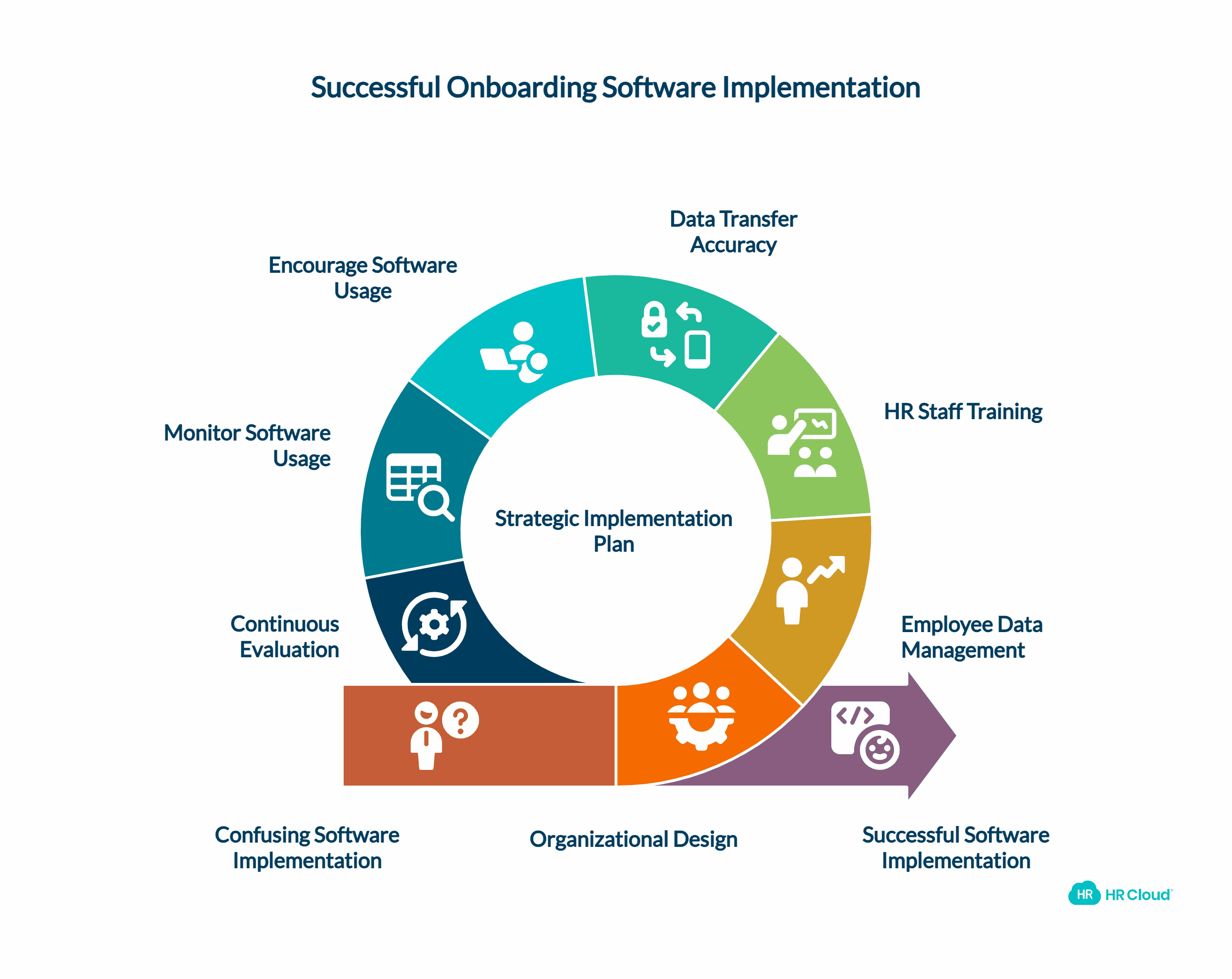
Selecting good employee onboarding software is confusing, but implementing it is another battle in itself. Employees today want fast, accurate, and easy-to-consume content. As per EmploySure, 80% of employees prefer to get immediate feedback rather than waiting for performance reviews.
Now the question is "How to implement onboarding software successfully?" Develop a plan for implementing the software. Start with a comprehensive plan. Maintain an HRMS checklist so that you don't get lost in the process while implementing it within your business.
The HRMS implementation checklist includes:
-
Change management
-
Hiring an HRMS consultant
-
Data migration
-
System testing
-
User training
-
Budget
-
Go-live
-
Challenges
Furthermore, there are two pillars for implementing the software.
Pillar 1: Organizational Design
HRIS promotes organizational consistency by automating key data collection processes. It relieves the HR team from the burden of remembering to request information. The need for a centralized, scalable, and consistent data space becomes vital.
As per the latest HR trends, 74% of companies are either implementing or planning to implement hybrid or work-from-home working models, which makes digital onboarding and remote onboarding crucial aspects of modern onboarding platforms.
Pillar 2: Employee Data Management
Employee Data Management enables HR teams to not just collect data, but also utilize it. With onboarding software, HR can easily track and plan employee career paths, including growth plans and promotion milestones.
This permits for quick identification and resolution of areas needing adjustments, while also enabling the management and tracking of career growth paths throughout the employee lifecycle.
Train HR Staff and Other Employees on How to Use the Software
To equip your HR staff, you can start by creating an employee training plan for the new onboarding software. This can often include sharing departmental goals & objectives and managing documentation. Also, it supports the wider organizational strategy to focus.
It is crucial to provide the new hire with a safe environment so that they can understand how their role contributes to department and organizational success. This creates a sense of ownership, purpose, and belonging in new hires.
For employees to be successful in their roles, they need to grasp how the work is carried out, including the various processes and workflows involved in the onboarding system.
Ensure That All Necessary Data is Transferred to the New System Accurately
According to a report from KPMG, 92% of senior executives have the same concern. They are apprehensive about the potential negative impacts of data and analytics on their organization.
Well, onboarding systems don't allow any compromises when it comes to data. The onboarding software utilizes advanced encryption standards (AES) with 256-bit encryption to safeguard user credentials that are stored in an encrypted format.
The application is configured to comply with GDPR regulations, and a GDPR secure sockets layer (SSL) certificate in place, ensuring the safety of employee information.
Encourage Employees to Use the Software for HR-Related Tasks
To maintain a seamless flow of work, it's essential to train your employees to make use of the onboarding software. They can use HRMS for sourcing employee data, streamlining onboarding processes, and managing other administrative tasks.
Onboarding software solutions act like a convenient, searchable repository for employee records and information. Furthermore, employee data can be safely and easily accessed by stakeholders through employee portals.
Monitor Usage to Identify Areas for Improvement and Additional Training
To measure and maximise the ROI of HR software, monitoring the usage of onboarding systems is important. You can gain insights into how the system is being utilized and identify areas for improvement and additional training.
You can define key onboarding metrics, utilize reporting features, conduct user surveys, and analyze user behavior to get insights into how the onboarding software is being used.
Continuously Evaluate the Software's Effectiveness and Make Adjustments as Needed
Organizations spend a lot of time and money getting people to work for them. Evaluating and making adjustments within your onboarding software is the key as you grow your business. This includes refining the onboarding experience and optimizing onboarding tasks for new hires.
Conclusion
Stats show that in terms of performance management, 48% of companies focus on increasing productivity and engagement in 2022. This highlights the importance of effective onboarding solutions and HR platforms in modern businesses.
To conclude, onboarding software helps businesses to make smarter decisions. When there are smooth conversations between departments, it leads to more efficiency and less chaos. In addition, these full-fledged onboarding platforms are now acting as business supervisors. For businesses that innovate, create, and manage time and labor, onboarding software can lead to the elimination of weaknesses and areas that are non-performing.
So, are you ready to equip your team with modern HR Tools?
 Discover how our HR solutions streamline onboarding, boost employee engagement, and simplify HR management
Discover how our HR solutions streamline onboarding, boost employee engagement, and simplify HR management
Author Bio:
Charu is an outreach specialist with over 4 years of experience in digital marketing. Her expertise lies in developing and executing outreach campaigns that drive engagement and build brand awareness. When she's not brainstorming outreach ideas, you can find Charu exploring the outdoors or practicing yoga.
Keep Reading
Top 10 Best Employee Engagement Software
An employee engagement platform acts as a hub for the daily or other periodic rituals of
How to Improve Employee Engagement in Healthcare: 9 Simple Things to Start Doing Today
Improving employee engagement in healthcare teams directly impacts the level of care
Employee Engagement Best Practices: The Dos and Don’ts (Free Manager Checklist Inside)
If you follow the right employee engagement best practices, that can turn engagement
Like What You Hear?
We'd love to chat with you more about how HR Cloud® can support your business's HR needs. Book Your Free Demo

Build a Culture of Recognition. Boost Engagement. Guaranteed.
Workmates empowers employees to stay informed, connected, and appreciated—whether they’re on the front line, in the office, or remote. Recognition drives 12x higher engagement.Trusted by industry leaders in every sector




Cut Onboarding Costs by 60%.
Take the confusion and follow-ups out of onboarding with automated workflows, digital forms, and structured portals—so new hires ramp faster 3X quicker.Trusted by industry leaders in every sector




